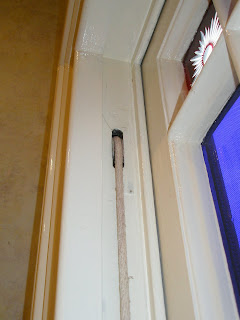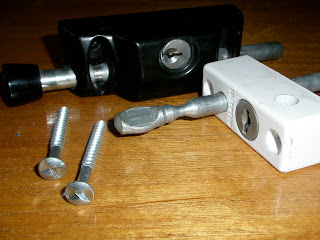This is the second of a two-part article designed to educate the novice about the supply of services to properties and the location of the relevant meters and turn-offs. Emergency situations are not that common but when they occur (for they surely will) knowing the location of your meters and relevant appliances will save much time and anguish.
To start with the basics, you need to know what a gas meter looks like. Now I thought everyone knew what these were but I discover almost ever week that it’s so foolhardy to assume. In Melbourne the most common variety is the blue/ grey model but newer similar ones also exist in a mushroom colour. The gas meter is usually to be found externally on the ground and generally to the side or rear of the property. Newer and perhaps more sensible options have both the water and gas meters side by side but this is rare. In older properties gas meters can be found half up walls or located in the remains of the original outside laundry. These date from a time when gas was used solely for the new cooking ranges or gas fired washing coppers.
Gas related problems generally concern the hot water unit or the gas fired heating system such as a ducted (heated air) or hydronic (heated water) unit. The older styled gas fired wall unit or ‘Vulcan’ style gas wall mounted heater are less problematic but even these should be cleaned and checked every year or so.
What type of heating do you have? Pictured below are the common styled ducted (hot air) system and the more efficient hydronic (hot water) panels. Ducted systems can also be placed in the ceiling where underfloor space is limited such as with a concrete slab. The heating system for ceiling or floor-mounted ducts is essentially the same and almost invariably consists of a gas fired small furnace with electric fan to force the heated air through to the outlets.
 |
| Ceiling mounted ducted heating vents in an apartment. |
 |
| Hydronic heating panel. |
Ducted heating units are often confused with hot water heaters but the two are separate. Ducted heating furnaces are generally located by an exterior sidewall for underfloor heating and sometime within the ceiling cavity itself when ducts are ceiling mounted (discover where yours are). In most cases, you will not have to concern yourself with their operation but should your ducted heating fail to heat when the fan is audible, the problem may simply be the pilot light.
The pilot light is a small constant flame that remains alight when the unit is not heating. When the unit is turned on, the pilot flame ignites the gas and voila! heat. A failed pilot light is common to both gas hot water units and ducted heating systems, some need to be lit manually whereas the modern ones rely on an automated system using batteries. Sometimes the simple solution is to replace the batteries in the automatic pilot and the problem is fixed.
 |
| The ducted heating unit (left) and the gas hot water unit (right behind bushes). Whilst not always placed together these units are often overgrown thereby hindering efficient operation. |
More serious problems will require a specialist but most problems can be avoided with regular servicing. I am constantly surprised that neglected and often weed encrusted units still manage to work year in and year out. Discover what type you have and check it now, where is the pilot light and how do you light it?
Hydronic heating does not require the power assisted fan and is therefore silent. It is a simpler system that utilises a (usually) gas-fired boiler that heats the water to the required temperature and then circulates this through to the individual unit or units in each room, providing radiant heat. Individual controls at the panels themselves give greater options for cleaner (dust free), efficient and economic heating. Problems with your hydronic system will require a specialist.
Electricity
Commonly confused are the electricity meter and the switchboard. Whether you live in a house or apartment, the meter board or box will be located externally by a sidewall or perhaps the front entrance. This is for the meter reader to gain access at any time. The switchboard however is almost always found inside. A typical location is just inside your front door and hallway but they can also be found in laundry cupboards.
 |
| A crowded meter board or box from an apartment block. Note the dials on the right regulating the automated public lighting. |
When a fuse blows or shuts off it is a safety measure. A fuse is like a gateway that regulates flow... too much and it shuts down. You then need to reset it or change the fuse wire (very old style) and think seriously about what you did to overload the system.
 |
An original switchboard or fuse box from 1961 (top) and a single fuse with repair fuse wire (bottom). Whilst this may seem antiquated, changing a fuse wire is still common in many homes. |
Some History
Gas Street lighting first came to Melbourne in 1849 and was introduced by the Swanston Street Confectioner and entrepreneur, Mr. Overton. Overton’s gas illuminated lamp was made possible by a costly and elaborate individual coke fired plant and eventually led to the establishment of The City of Melbourne Gas &Coke Company (1850). Essentially halted by the discovery of Gold, Gas lighting did not really get under way until 1856 in Melbourne.
We forget all too easily that prior to the introduction of natural gas in 1969, all gas was manufactured. Gas was produced from coal at South Melbourne, Highett, Box Hill, Footscray and West Melbourne the latter being closed in 1970 after 113 years of continuous use. The public, commonly referred to sites such as these, as gasometers and the product they produced was known as Town Gas as distinct from Natural Gas.
In 1881 the first electric light was displayed in Swanston Street by The Victorian Electric Light Co. and powered by a gas driven generator. In 1888 The Melbourne City Council replaced two gas lamps with electric and by the end o the decade individual premises were being illuminated by small electricity generating plants. It was a new, exciting but unregulated era with the Victorian Electric Light Co. becoming the Australian Electric Co. and later the Melbourne Electric Supply Co.
Electric Trams were introduced in 1906 and Electric trains (begun in 1912) by 1919.
 |
| Woman with electric appliances in Kitchen; toaster, oven, stove, fan and Kettle 1928. From the photographic collection of the State Electricity Commission, courtesy of Museum Victoria.“Don’t overload that Fuse!” |
This information is designed to aid you in safety it is not a guide for repairs. Naturally when dealing with either Water, Gas or Electricity problems you need to use the relevant Trades and Authorities. Being able to locate your services and meters quickly and understanding what systems you use, such as gas or electric hot water, ducted or Hydronic heating, etc. is vital for efficient and effective problem solving.
























